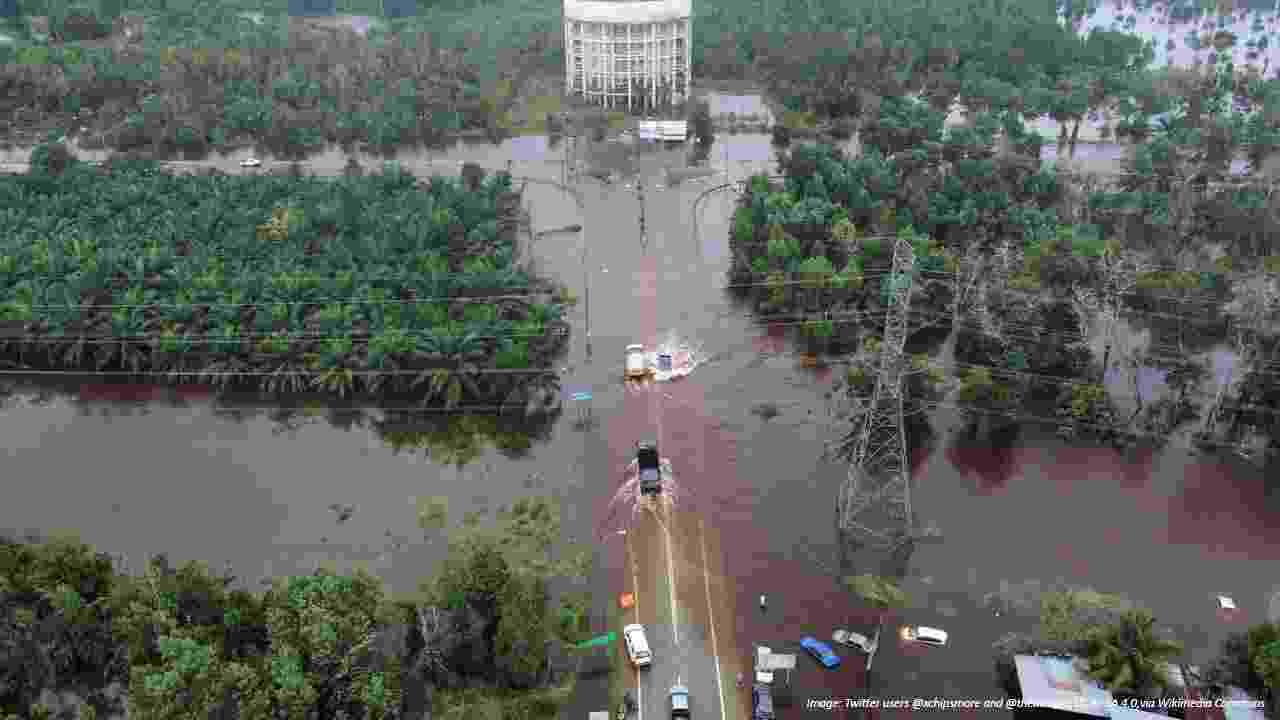Long-term homogeneity and trend analysis of seasonality and extreme rainfall under the influence of climate change
In Johor River basin, Malaysia
07 April 2023


A flooded area in Kuantan, Pahang during the December 2021 Malaysian floods
Authors: Zulfaqar Sa’adi, Zulkifli Yusop & Nor Eliza Alias
Abstract: There is a growing concern over the unprecedented shifts in seasonality and extreme rainfall over the last century across the globe due to climate change. However, there is still a lack of basin-scale study in documenting trend, changes, and variation across Peninsular Malaysia and its relation with flood occurrence. Therefore, Johor River basin (JRB), which plays a pivotal role in the country’s development, was selected as a case study by evaluating 24 rainfall stations for homogeneity over the period 1970–2015 and followed by the analysis of rainfall seasonality and extreme rainfall trend. Mann–Kendall trend test was applied to show the area within JRB that is subjected to change at 95% significance level. Even though 75% of the stations had strong auto-correlation in the time series due to large-scale climate influence, the imputed rainfall stations showed no potential discontinuity with t-test statistics between 0.87 and 0.90 and R2 between 0.995 and 0.999 for the double mass curve of the yearly rainfall time series. The constructed PDF showed the restoration of the normal distribution of the rainfall data with higher peak as the missingness of the high-intensity rainfall has been restored. After that, a homogeneity test was conducted for annual and seasonal rainfall using a hybrid of Standard Normal Homogeneity test, Pettit test, Buishand Range test, and Von Neumann ratio test.
The results showed that for the annual series, 43% of the total stations were found to be ‘useful’, but more ‘useful’ stations based on the seasonal data, with 67% and 52% of the total stations for NE and SW monsoons, respectively. As no anthropogenic effect can be deduced, the presence of inhomogeneity in some stations is associated with the influence of high climate variability. Although non-significant change was observed, the seasonality index (SI) showed that the annual rainfall regime in JRB is mainly classified as ‘rather seasonal with a short drier season’ (SI range from 0.39 to 0.47). Comparatively, the rainfall regime during the drier SW monsoon is more irregular (SI range from 0.67 to 0.72) than the wetter NE monsoon (SI range from 0.57 to 0.68). Spatially, increasing SI was observed in the downstream area indicating increasing occurrence of extreme rainfall over a shorter period. For trend analysis, RClimDex was utilised to compute eleven extreme rainfall indices as recommended by ETCCDI, consisting of frequency and intensity extreme rainfall indices. Generally, the results showed that increasing extreme rainfall in the form of frequency indices is more prominent throughout JRB particularly at the end of the NE monsoon. During the NE monsoon, frequency index of R10 showed a significant increasing trend at thirteen stations. Meanwhile, R20 and R25 showed increasing trend at five stations, mainly in the downstream and at the west of the basin. During the SW monsoon, R10 showed a significant increasing trend at six stations, but R20 and R25 showed a significant decreasing trend at two and one station, respectively. Based on the past flood record, increasing trend of R10, R20, R25, and CWD during the NE monsoon across flood prone area in Sayong river, Kota Tinggi town, and downstream urbanised area is expected to worsen the flood conditions, which required improved flood mitigation and adaptation strategy.
Images:
'Kuantan during December 2021 Malaysian floods', by Twitter users @xchipsmore and @thelivingtr, CC BY-SA 4.0, via Wikimedia Commons



